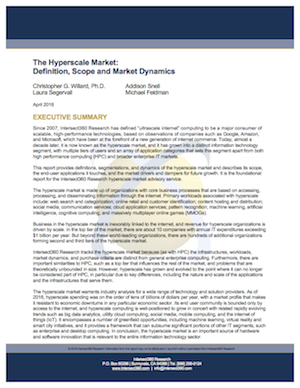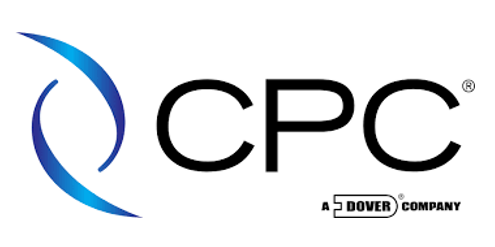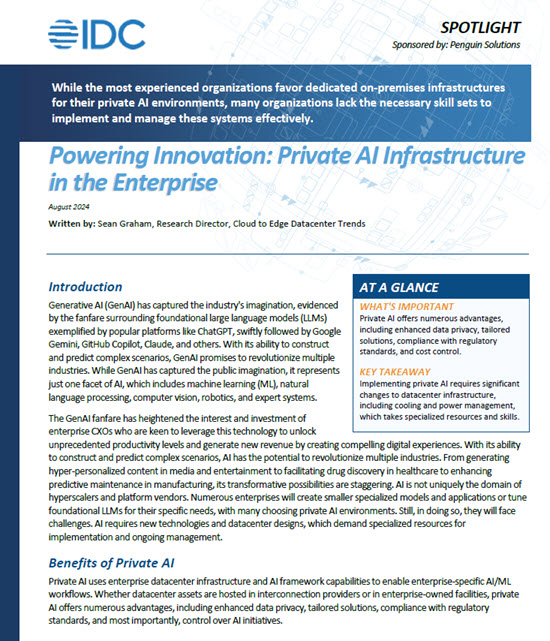 Today Intersect360 Research published a new research report on the Hyperscale market. This report provides definitions, segmentations, and dynamics of the hyperscale market and describes its scope, the end-user applications it touches, and the market drivers and dampers for future growth. It is the foundational report for the Intersect360 Research hyperscale market advisory service.
Today Intersect360 Research published a new research report on the Hyperscale market. This report provides definitions, segmentations, and dynamics of the hyperscale market and describes its scope, the end-user applications it touches, and the market drivers and dampers for future growth. It is the foundational report for the Intersect360 Research hyperscale market advisory service.
The Hyperscale Market – Definition, Scope and Market Dynamics
Since 2007, Intersect360 Research has defined “ultrascale internet” computing to be a major consumer of scalable, high-performance technologies, based on observations of companies such as Google, Amazon, and Microsoft, which have been at the forefront of a new generation of internet commerce. Today, almost a decade later, it is now known as the hyperscale market, and it has grown into a distinct information technology segment, with multiple tiers of users and an array of application categories that sets this segment apart from both high performance computing (HPC) and broader enterprise IT markets.
The hyperscale market is made up of organizations with core business processes that are based on accessing, processing, and disseminating information through the internet. Primary workloads associated with hyperscale include: web search and categorization; online retail and customer identification; content hosting and distribution; social media; communication services; cloud application services; pattern recognition; machine learning, artificial intelligence, cognitive computing; and massively multiplayer online games (MMOGs).
Business in the hyperscale market is inexorably linked to the internet, and revenue for hyperscale organizations is driven by scale. In the top tier of the market, there are about 10 companies with annual IT expenditures exceeding $1 billion per year. But beyond these world-leading organizations, there are hundreds of additional organizations forming second and third tiers of the hyperscale market.
Intersect360 Research tracks the hyperscale market because (as with HPC) the infrastructures, workloads, market dynamics, and purchase criteria are distinct from general enterprise computing. Furthermore, there are important similarities to HPC, such as a top tier that influences the rest of the market, and problems that are theoretically unbounded in size. However, hyperscale has grown and evolved to the point where it can no longer be considered part of HPC, in particular due to key differences, including the nature and scale of the applications and the infrastructures that serve them.
The hyperscale market warrants industry analysis for a wide range of technology and solution providers. As of 2016, hyperscale spending was on the order of tens of billions of dollars per year, with a market profile that makes it resistant to economic downturns in any particular economic sector. Its end user community is bounded only by access to the internet, and hyperscale computing is well-positioned to grow in concert with related rapidly evolving trends such as big data analytics, utility cloud computing, social media, mobile computing, and the internet of things (IoT). It encompasses a number of greenfield opportunities, including machine learning, virtual reality and smart city initiatives, and it provides a framework that can subsume significant portions of other IT segments, such as enterprise and desktop computing. In conclusion, the hyperscale market is an important source of hardware and software innovation that is relevant to the entire information technology sector.
In this video from the 2016 HPC Advisory Council Switzerland Conference, Addison Snell from Intersect360 Research presents: HPC and Hyperscale Trends for 2016.
Download the Executive Summary * Get access to the Full Report



